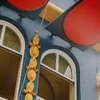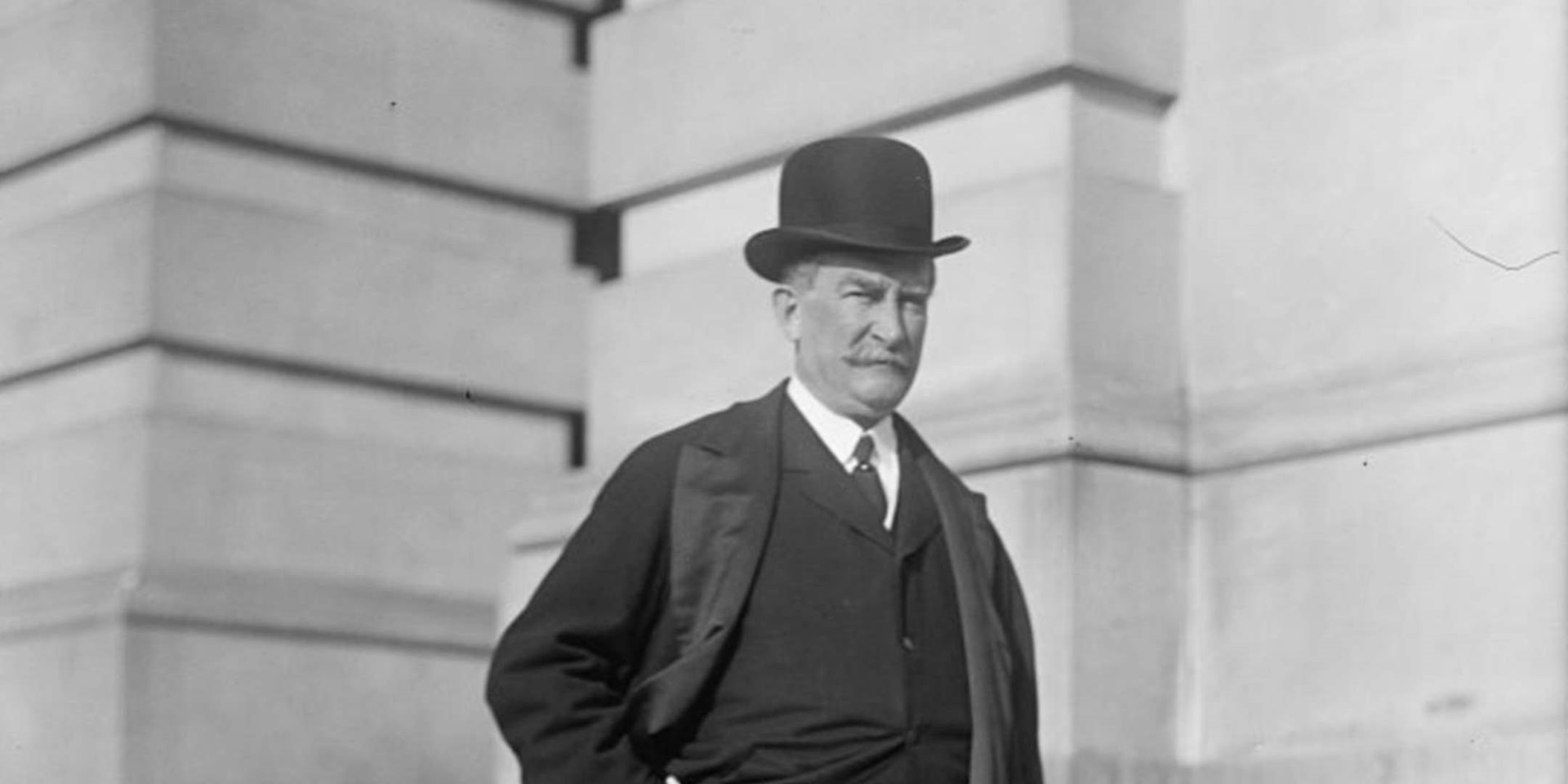

Thomas W. Lawson in his office, surrounded by the fresh flowers and books he loved. Image courtesy of the Library of Congress.
At the beginning of the 20th Century, the world seemed unbearably young. It had yet to experience a World War or the Great Depression. Fossil fuels were the future and any new technology was seen as a good thing. It became known as the Gilded Age and it must have been heady times for those who had the cash to enjoy it. And there were plenty of those. One, in particular, was Thomas W Lawson. At one time Lawson was thought to be one of the wealthiest men in America with a fortune estimated at over USD $50 million (over $1 billion in today’s money).
Of course, all the best stories begin with childhood adversity and Lawson had that as well. He said he ran away at the age of 12 from his widowed mother, left school and managed on his own until he found work in a stockbroker’s office. Legend tells that at 17 he was already trading stocks and by the time he was 30, he was a millionaire.
Like many wealthy men of the era, Lawson liked to build things. Not just houses and companies but boats and ships. No matter what the scale, Lawson took a shot. His most well-known attempts at building ships reveal the type of man Lawson was. First in 1900, Lawson built the Independence. He put the sloop forward as a contender to defend the 1901 America’s Cup. When told by the New York Yacht Club that he needed to be a club member to compete or put the Independence in another member’s name, Lawson refused. He would only compete, as the boat’s name suggested, as an independent.
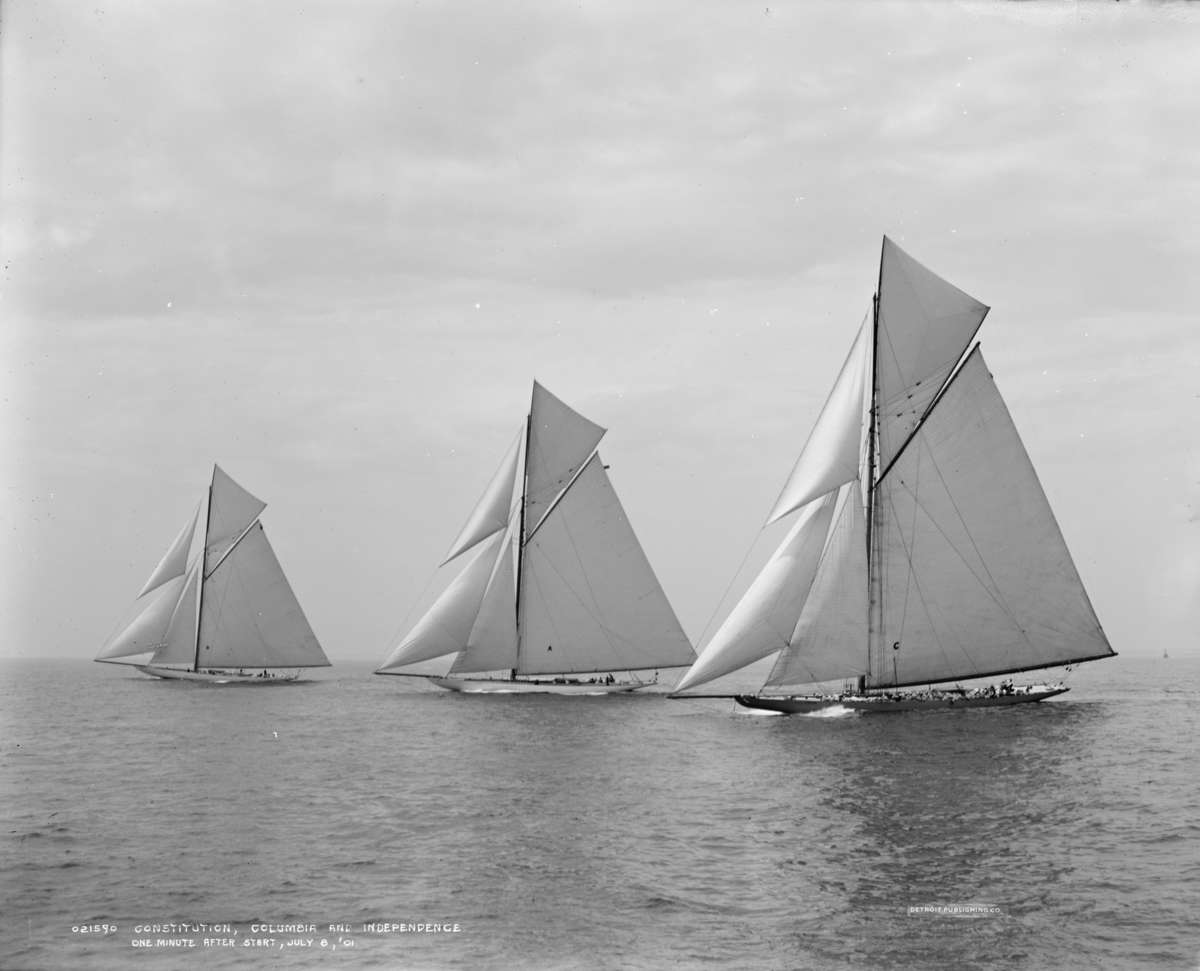 Constitution and Colombia with Lawson's Independence allowed to race on the right.'>
Constitution and Colombia with Lawson's Independence allowed to race on the right.'>An unofficial race for the America’s Cup series on July 8, 1901 between Constitution and Colombia with Lawson’s Independence allowed to race on the right.
At the same time Independence was being built, Lawson was also busy building a ship on the other end of the scale. Launched in 1902, the Thomas W Lawson would be the only seven-masted and largest schooner ever built without an auxiliary engine. Like the Independence, the naming of the Thomas W Lawson is quite telling. The schooner was enormous, difficult to manoeuvre and generally troublesome to navigate at that size without an engine.
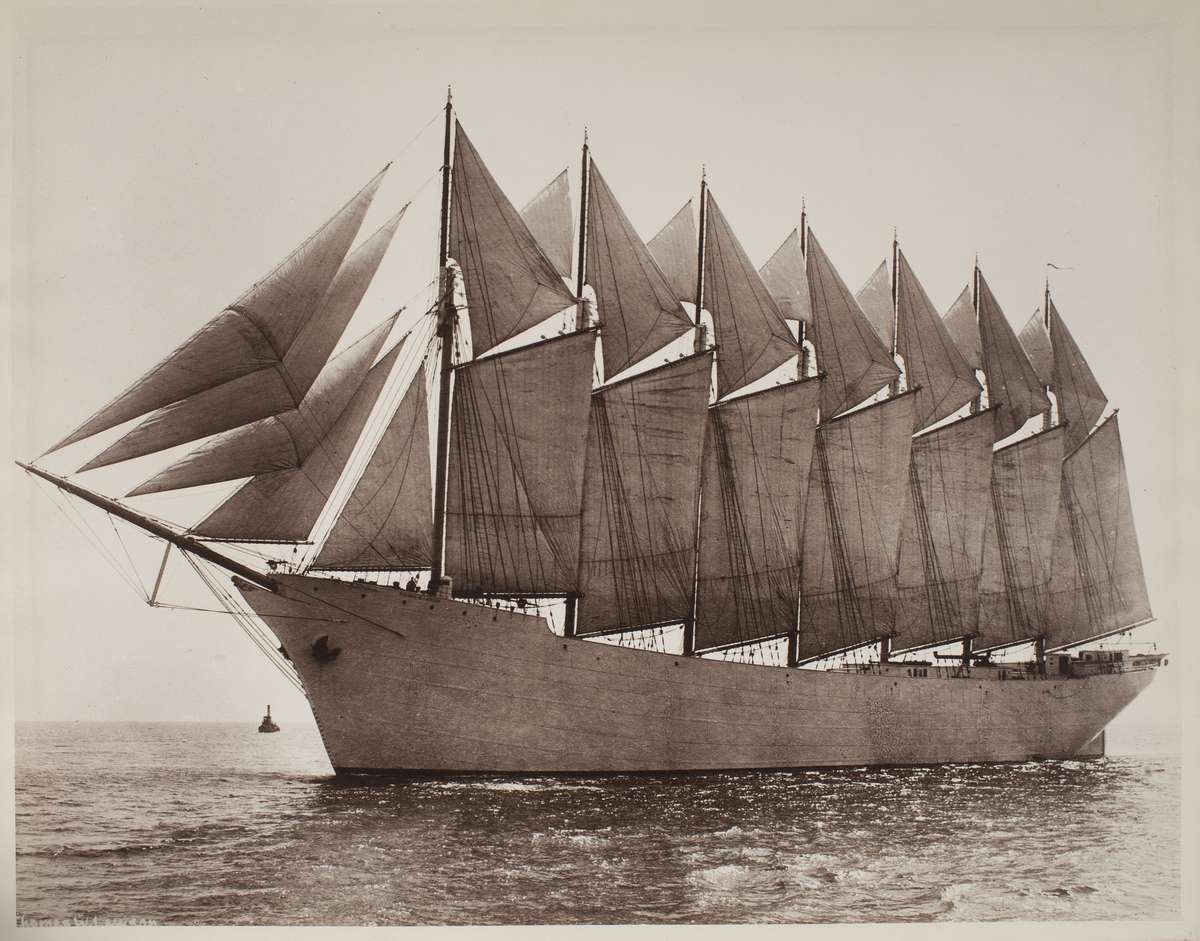
The Thomas W. Lawson in full sailing glory. The largest seven-masted schooner ever built with no auxiliary engine. It would be wrecked five years later. ANMM Collection 00033619.
What Lawson hoped to achieve with this enormous ship was not only personal publicity but to provide an alternative to the proliferation of the large steamship. The Thomas W Lawson was intended for the Pacific cargo trade but was losing money from the outset.
It became a coal trader along the east coast of the US, although only at specific ports due it’s prohibitive size. After only five operating years the ship was wrecked in 1907. The Thomas W Lawson was on charter to London with a load of 58,000 barrels of light paraffin oil when, struggling in a gale, hit rocks and along with the loss of most of the crew, the full cargo of oil was spilt.
Although primarily an oil and stocks man Lawson had many other interests. He loved baseball and had developed and sold a highly successful baseball card game at a young age. He bred and raced horses and had an enduring love of fresh flowers. In 1899 he spent USD $ 30,000 ($1 million in today’s money) for a carnation to be named for his wife. It became known as ‘The Mrs Lawson’, not the ‘ Jeannie Augusta’ which was actually her name, but a loving gesture nonetheless.

The ‘Mrs Lawson’ carnation.
True to form, Lawson also built a spectacular private estate near Boston called (No, not ‘Lawson Land’) ‘Dreamworld’. The sprawling property overlooked what is now known as the ‘Lawson Tower’ which is still recognised as the ‘most beautiful water tower in North America’. The story says Lawson found the practical water tower aesthetically unpleasing and so disguised it with a fully functioning German style bell tower.
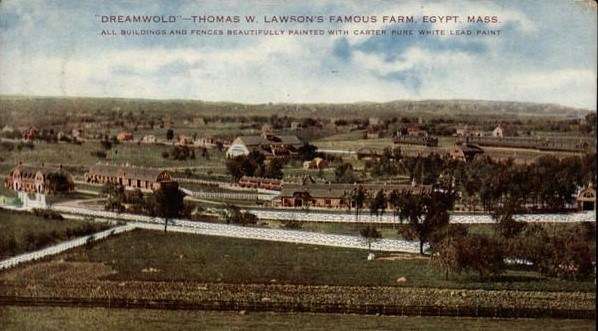
Lawson’s sprawling ‘Dreamworld’ estate, built at an estimated cost of USD $27 million.
Lawson was also a prolific writer. He wrote a novel ‘Friday the 13th’ which reflected his highly superstitious nature, even in business. The popularity of the book and Lawson’s own practices became partially responsible with the popularising of the fear of Friday 13th this century. He was widely known as a writer of nonfiction such as ‘The Lawson History of the America’s Cup’ but in particular ‘Frenzied Finance’. This work brought him enormous publicity as it exposed ‘in sensational detail the fraudulent manipulations of some of the leading bankers and businessmen of the day’. An interesting topic choice considering Lawson had made his own wealth alongside these ‘money kings’ in the same industry.
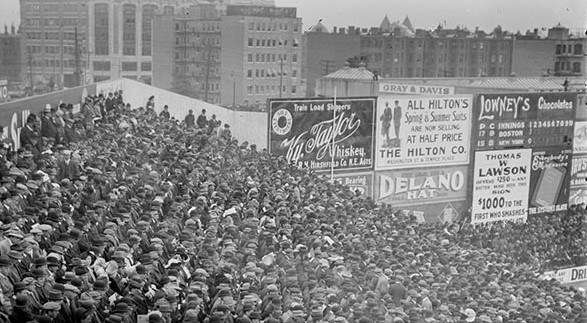
A combination of Lawson’s passions; baseball and reform. To the right of the baseball crowd is a billboard by Lawson offering the public a reward of $1000 to smash ‘The System’s Slate’. Image courtesy of the Boston Public Library.
But it was this insider knowledge that lent such weight to Lawson’s claims of bribery and fraud. He became one of the earliest and most public ‘muckrakers’ – exposing what he knew to a shocked and outraged public. Lawson became as well known as the high ranking men he had exposed and vilified. He was determined to change the corrupt corporate system and spent large amounts of his own wealth trying to bring about reform. He petitioned governments and businesses to be more honest in the ways they operated but later became disheartened at their lack of compliance and the public’s waning attention.
Lawson re-immersed himself in the finance world, trying to change the ‘problems of American Big Business from the inside’. But he had burnt bridges and former associates and clients chose to turn their back on him rather than get on board his reform train. So his time in the Gilded Age faded. Lawson sold his assets and one of the wealthiest men in the United States ended his years in comparative poverty.
So what was Lawson’s lasting legacy? Big business reform? An end to corporate corruption? Well no, it was actually something that most of us have in our homes today: The comfy, modern style sofa. Yes, the Lawson Sofa was designed by Thomas W. Lawson. It is said that Lawson had wanted a more comfortable couch than the high backed and ornate Victorian style that
Yes, the Lawson Sofa was designed by Thomas W. Lawson. It is said that Lawson had wanted a more comfortable couch than the high backed and ornate Victorian style that was all the rage at the time. So he designed a sofa with a soft cushioned back, three pillows long, with equally padded seating cushions and well-positioned arms. Thank goodness for that!

The Lawson Sofa, a staple across the world.
It is difficult to imagine what Thomas Lawson would make of his life’s endeavours coming down to a piece of domestic furniture. His ships faded into anonymity and his proposed wide sweeping corporate reforms never eventuated. His thoughtful and well-intentioned books collected dust in libraries. The Lawson estate is broken up and only known for the water tower overlooked. But Lawson’s sofa design, intended for personal use, has endured and is now a standard for furniture stores all over the world, proving comfort for millions of backs every night. And that’s got to be something.
— Myffanwy Bryant, Curatorial Assistant
Want to find out more surprising stories? Why not check out our collection online (Warning: You might lose a few hours doing this).
